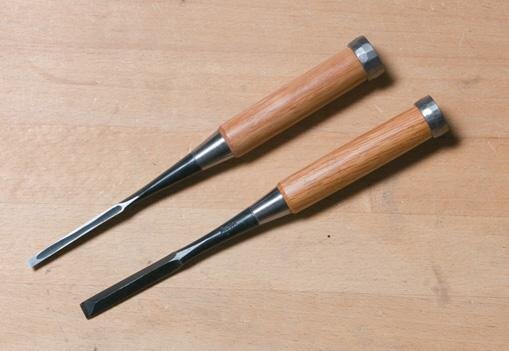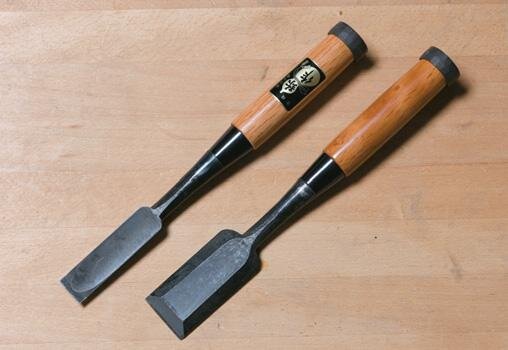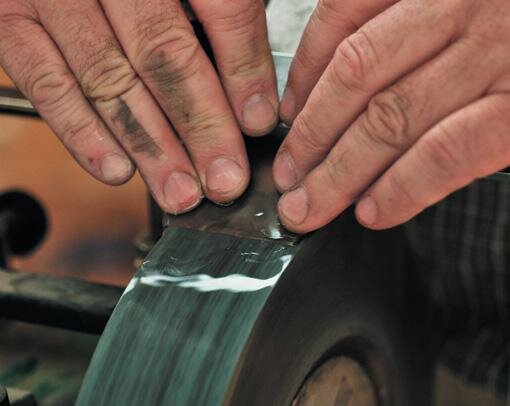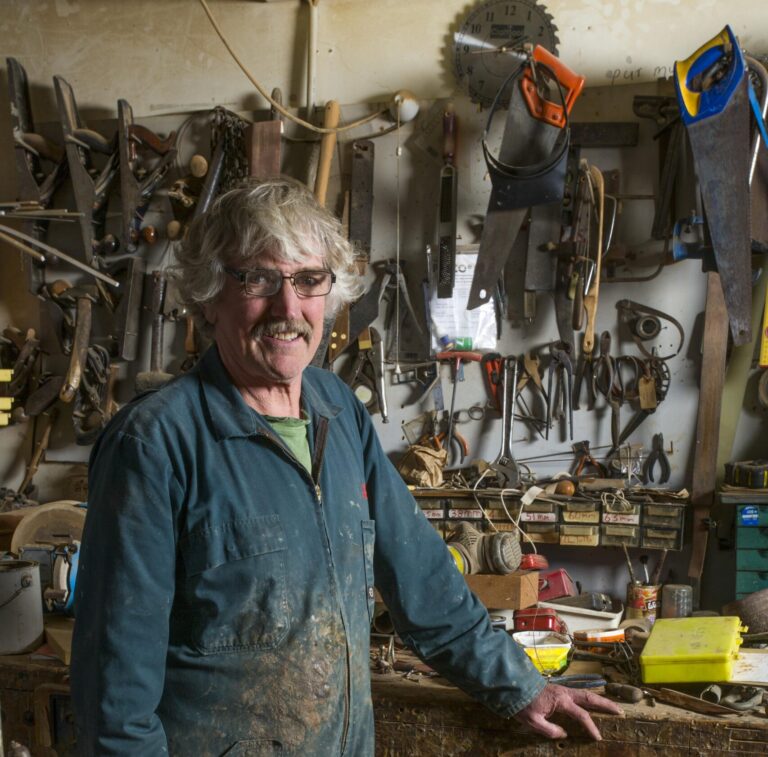The reputation of Japanese chisels for high quality goes back 150 years
By Jude Woodside
Japanese chisels have a reputation for high-quality manufacture and exceptional steelwork.
Undoubtedly, the origins of this tradition of blade manufacture lie with the swordsmiths of the samurai era when only samurai and swordsmiths had the right to bear arms. The blade manufacturers had revered status.
Samurai chisels
When the samurai were banned at the beginning of the Meiji era (1868-1912), these learned crafts-men turned their skills to the more peaceful pursuits of producing chisels and planes.
They retained the reverence for the work and the attention to detail along with their secret techniques. Until very recently this tradition persisted and even today there are thousands of small, one-man workshops produc-ing hand-forged steel blades bearing their maker’s imprint.
At their heart, Japanese chisels are made from metal that is forge-welded and worked. The tools are composed of two metals, one soft and the other exceptionally hard (typically 64C on the Rockwell scale). The two are bonded together in such a way that the hard metal makes the cutting edge and the softer metal absorbs the shocks to which a chisel might be exposed. This allows the chisel to maintain its edge longer.
Ryo Magami with a struck Japanese chisel.
White and blue
There are two types of steel that comprise the hard steel edge in a Japanese chisel: white and blue.
The names are simply derived from the colour of the paper in which they were wrapped. Now those names derive from the colour of the labels but nonetheless still refer to different characteristics of the metal.
White steel refers to a steel that is marginally softer and very densely grained, with a higher carbon content than so-called blue steel (usually 1-1.5 percent carbon).
It is slightly less brittle and so has less of a tendency to crack or chip, which blue steel can do. White steel usually has to be worked down to the thickness and, with working, will pack into a tighter crystal structure. It sharpens more easily than blue steel but will still retain an edge longer than the equivalent western chisel. Blue steel refers to a steel that has certain alloys in it such as chrome and tungsten. It is harder to sharpen but will take more abuse, although preferred it can have a tendency to chip due to its brittle strength.
Lamination
The well-established lamination process by which the chisels were being made was encouraged after World War II when the supply of good quality steel was limited. But such restricted steel also had more alloys than the craftsmen preferred to use and so they sought out the less-refined but still-serviceable steel produced prior to 1900.
Often this steel was to be found in the form of anchor chains and old boilers. They also preferred this because of the silica content which is now all but eliminated from modern steels. This older steel constituted the bulk of the softer steel in chisel-making
Rough-forged
Traditionally most chisels are rough-forged, with the softer upper part of the chisel made from wrought mild steel largely unfinished and only the underside of harder steel and the edge being ground.
The back of the chisel is shaped in relief with up to three hollows. The hollows make it easier to flatten the back by reducing the amount of material to grind. Although it appears that these hollows might eventually impinge on the blade’s edge, in practice regular sharpening and honing moves the hollow back as the blade wears. The hollows also aid the use of the chisels by keeping them flat against the edge of a mortise, for instance.
View fullsize
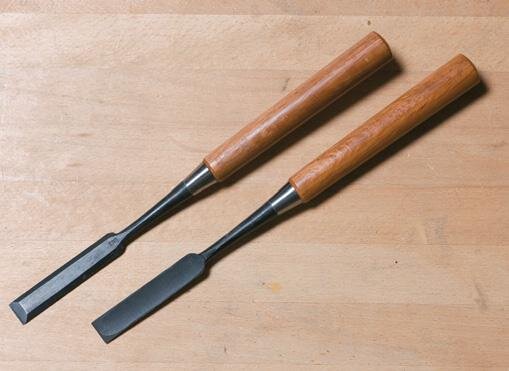
View fullsize
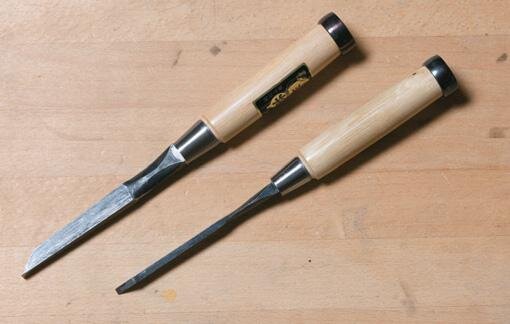
View fullsize
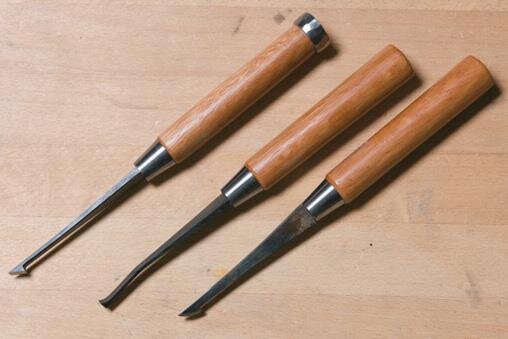
View fullsize
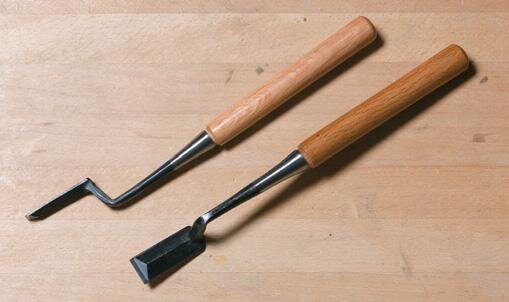
Struck and pushed
Japanese chisels are divided roughly into two types – those that are struck with a hammer and those that are pushed.
Most can be struck and for this, the Japanese tend to use metal hammers. To avoid the chisel ends being beaten out of shape or split, most Japanese chisels have a ring applied to the ends to protect the handle. They also have a tang and ferrule system, with a large square tang slotting into a shaped position and a ferrule closely fitted over the shaped end of a chisel to capture it.

